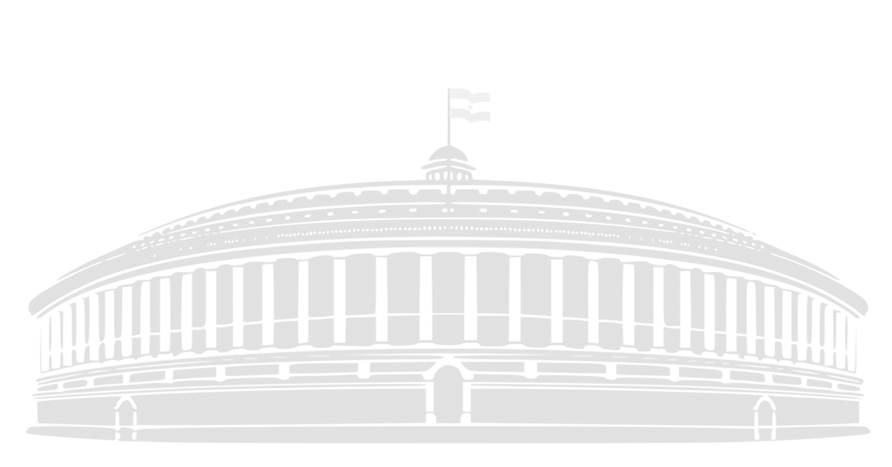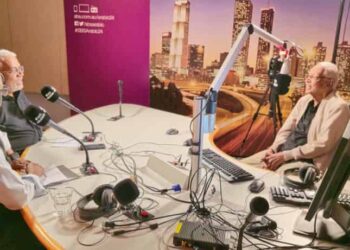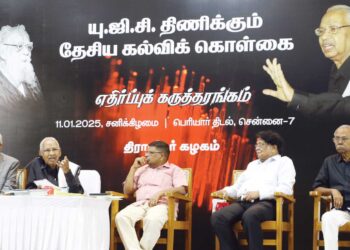Dr. K. Veeramani
President, Dravidar Kazhagam
This is the text of the Memorandum sent on behalf of Dravidar Kazhagam to the Parliamentary Committee on ‘Rationalization of Creamy Layer in Employment for OBCs in Services and Posts under the Control of Government of India including Union Territories, PSUs etc.’
The concept of ‘creamy layer’ for providing reservation to other Backward Classes by excluding a section of the so called privileged is not in conformity with the provisions of the Constitution. Article 15 (4) of the Constitution says,
“Nothing in this Article or in Clause (2) of Article 29 shall prevent the State from making any special provision for the advancement of any socially and educationally backward classes of citizens or for the Scheduled Castes and the Scheduled Tribes.”
This hard earned Article was inserted through the First Amendment of the Constitution in 1951 which the then Prime Minister Jawaharlal Nehru introduced in the Parliament duly acknowledging the massive agitations held in the then Madras State, presently Tamil Nadu, under the leadership of Periyar E.V. Ramasamy (1879 – 1973). The Article says that backwardness of the people has to be oriented on social and educational background and not on economic criterion, which has been sufficiently discussed at the floor of the Parliament.
Prime Minister Jawaharlal Nehru placed the views thus: “My difficulty is this that when we chose those particular words there for the advancement of any socially and educationally backward classes, we chose them because they occur in Article 340 and we wanted to bring them boldly from there. Otherwise I would have had not the slightest objection to add ‘economically’. But if I added ‘economically’ I would at the same time not make it a kind of cumulative thing but would say that a person who is lacking in any of these things should be helped.
‘Socially’ is a much wider word including many things.”
(Source: Parliamentary Debates 1951 –Third Session Part II Volume XII Columns 9814, 9820 and 9822)
The substance of ‘Creamy Layer’ based on the economic criterion of the class of people, to whom it is made applicable, is against the Constitutional provisions. The economic background of backwardness was not omitted casually while framing Article 15(4) while bringing the first amendment to the Constitution as the yardstick to measure the economic backwardness of the people is not permanent one but elastic and it cannot be reckoned as a tool to dispense social justice which is oriented on entirely different plank. The reservation policy was formulated on wider perspective by reckoning the social backwardness of the citizens. It cannot be decided on the basis of economic backwardness for the redressal of which welfare schemes would be appropriate. The reservation policy is not for poverty alleviation but to uplift the discriminated communities who were deprived for centuries together. That was why the Article 15(4) was cautiously crafted with mere ‘socially and educationally backward classes of citizens’.
The genesis of the concept of creamy layer was against the Constitutional provisions.
Giving some weightage to offset the effect of economic condition loaded to identify under ‘creamy layer’, an Office Memorandum dated 8th September 1993 was issued by Ministry of Personnel, Public Grievances and Pensions, Department of Personnel and Training, Government of India to exclude salary and agricultural income while reckoning the economic level of Other Backward Classes for the purpose of covering them under ‘creamy layer’.
But recently the Office Memorandum dated 6th October 2017 issued by the Ministry has caused serious injustice to the Other Backward Classes serving in public sector banks, financial institutions, insurance companies and other enterprising undertakings of Government of India. The Office Memorandum states that such OBC employees who earn the annual salary income of above Rs 8 lakhs (the latest income ceiling) would be covered under ‘Creamy Layer’. The latest OM contradicts the earlier OMs by reckoning the salary income to decide the OBC status for the reservation benefits, meant for the wards of banking and other public sector undertakings. This is a discriminatory treatment meted to them in comparison with the Central Government employees to whom the salary income is not reckoned to decide the OBC status.
This discriminatory treatment has debarred the wards of public sector banks and other PU undertaking in their ultimate selection in All India Civil Services since the year 2015, despite being considered positively and having passed through the preliminary and written examination stages under OBC category. The aggrieved OBC candidates challenged the selection process at Madras and Delhi High Courts and they got the verdict from the Courts in their favour for considering them under OBC category in the final selection process of All India Civil services. Even then the aggrieved candidates were not considered under OBC category stating that they fall under ‘Creamy Layer’ section since their parents serving in public sector undertakings get salary income exceeding Rs 6 lakhs p.a. the then prevailed income ceiling. This sort of discriminatory treatments were meted even prior to the issuance of Office Memorandum dated 6th October 2017. It is nothing but unfair treatment to ratify which Office Memorandum was issued later.
The ‘Creamy Layer’ came for implementation as per the verdict, widely known as Indira Sawhney case, given by the Supreme Court of India. The verdict of Indira Sawhney is ‘judicial oxymoron’, making the Central Government notification of providing 10 per cent reservation benefits in Central Services for the economically backward communities as invalid and simultaneously pronouncing the ‘Creamy Layer’ which is based on economic criterion to provide reservation for Other Backward Classes in the Central Services. The genesis of ‘Creamy Layer’ itself was self-contradictory due to the substance of economic criterion over which it is framed.
So it is our earnest view that the concept of ‘Creamy Layer’ itself has to be abolished on the ground that it is segregating the OBC people who were already segregated among the discriminated masses. The concept of ‘Creamy Layer’ will only aggregate the discrimination among the oppressed OBCs, which is against the principle of Social Justice.
Pragmatically, on rationalising the prevailing ‘Creamy Layer’ process, the income ceiling of the existing Rs.8 lakhs per annum must be enhanced to Rs.15 lakhs quantitatively, besides the adherence of the mode of excluding the salary income of the family of OBCs for reckoning the income ceiling criterion to cover them under Creamy Layer.
We appeal to the esteemed Chairperson and Hon’ble Members of the Parliamentary Committee on Other Backward Classes to consider our submission on ‘Creamy Layer’ principle and practices and bring suitable modifications in the implementation at the immediate run as well as in long range to uphold the Social Justice for its adequate dispensation. All the appropriate action lies in the abolition of ‘Creamy Layer’.
Please bestow your attention, analyse the issue and offer the recommendations.








